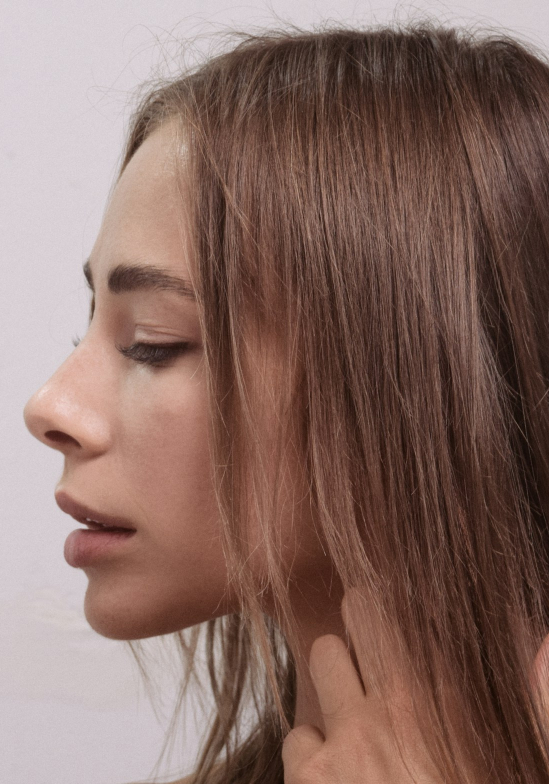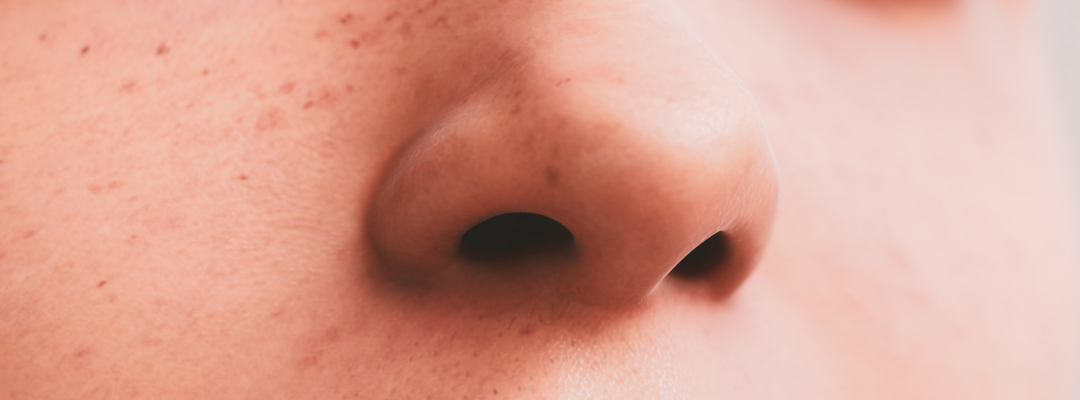The nose is not just another facial feature. It plays a central role in the harmony and balance of every face. It also shapes the way we perceive a person’s gender identity. Within the context of facial feminization surgery, feminizing the nose is one of the most significant steps a trans woman may choose when seeking a more feminine facial harmony. It’s not about fitting into a mold, but about making the face reflect more accurately who we feel we are.
However, it is important to keep in mind that not all trans women want or need facial feminization. This surgery is intended for those who wish to soften the features of their nose in order to feel more aligned with their physical appearance.
What makes a nose appear masculine or feminine?
The shape of the nose influences how facial harmony is perceived, and with it, each person’s gender expression. While there are no fixed rules—every face is unique—there are certain nasal traits that are more commonly associated with feminine or masculine features.
What does a feminine nose look like?
A more feminine-looking nose is often described as having softer, rounder traits. However, lacking these traits – or having none at all – does not mean the nose has “flaws,” isn’t attractive, or doesn’t belong to a feminine face. Feminizing the nose does not mean “erasing” its features, but refining them with respect, sensitivity, and coherence, while preserving what makes each face unique. Achieving a feminine face requires a global, individualized approach carried out by an experienced team.
In general terms, these are the features that influence the perception of a more feminine nose:

A more concave or gently curved nasal bridge
While in masculine faces the bridge is often straight or convex (frequently with a small hump), in feminine faces it is more common to see a softer line, gently curving inward between the glabella and the nasal tip. This curvature adds delicacy and fluidity to the profile.
A more defined and slightly upturned tip
Thicker, bulbous, or drooping tips are usually associated with masculine traits. A finer tip, projected forward with a subtle upward rotation, conveys a brighter, more open, and feminine expression. The rotation should be delicate, natural, and always adapted to the person’s facial morphology.
A narrower, more refined nose
Both at the bridge and at the base, feminine noses tend to be narrower, without lateral prominences. The goal is not to over-reduce, but to achieve balanced proportions with the rest of the face.
A more open nasolabial angle
This angle, formed between the base of the nose and the upper lip, is a key detail. In masculine faces it is around 90–95º, while in feminine faces it opens up to 100–105º. This simple change in tip inclination can transform the overall facial expression, adding a more feminine trait.
A lower and more delicate radix
The radix is the point where the nose begins between the eyebrows. In feminine faces it usually sits lower and closer to the facial plane. This lower position contributes to a smoother profile, avoiding abrupt transitions between the forehead and the nasal bridge.
A more harmonious transition with the forehead and lips
The nose cannot be analyzed in isolation. Nasal feminization should be coordinated with other facial areas such as the forehead – especially if frontal bone reduction has been performed – facial volume adjustments (softening traits through cheekbone augmentation or buccal fat removal), jaw contouring (feminization of the lower third of the face), the upper lip, and the chin. It is this harmony among structures that truly shapes a face we perceive as masculine or feminine.
Feminizing Rhinoplasty: Redefining Proportions with Sensitivity
Feminizing rhinoplasty is a surgical procedure aimed at softening nasal features to align them with an aesthetic standard perceived as more feminine. Unlike conventional rhinoplasty, the surgeon’s goal is not only to beautify or correct a specific imperfection – whether aesthetic, functional, or both – but also to harmonize the entire face from an integrative perspective.
To do this, the surgeon must take into account:
-
- The shape of the nasal bridge
- The size and projection of the tip
- The nasolabial angle (the inclination between the nose and the upper lip)
- The distance between the nasal base and the upper lip, which tends to be shorter in feminine faces
Feminizing rhinoplasty may be performed as a standalone procedure, or as part of a complete facial feminization surgery. In all cases, the design is personalized according to facial proportions, life history, and the patient’s wishes.
The Important Detail: Nose-to-Lip Distance
One of the elements that most strongly influences the feminine expression of the lower third of the face is the distance between the base of the nose and the upper lip. Typically, this distance is shorter in cis women than in cis men, which is why this small detail can make a huge difference in gender perception.
Over time, or due to testosterone during puberty, this distance can increase. To correct this, there is a specific procedure called a lip lift, which shortens the distance without altering the natural shape of the lips. The result is a more delicate expression that subtly but effectively enhances facial feminization.

What if I Don’t Want Surgery? Non-Surgical Rhinoplasty as an Alternative
For those seeking a subtle change or wishing to first explore non-surgical options, non-surgical rhinoplasty can be a valid alternative. This treatment involves injecting hyaluronic acid at strategic points of the nose to visually modify its shape. With this technique, it is possible to refine or slightly lift the tip, slim the nasal bridge, improve symmetry and profile, and correct small imperfections or irregularities.
However, it does not reduce nose size or change bone structure. Results are temporary, lasting between 6 and 12 months, and it does not replace feminizing rhinoplasty if the goal is a more significant transformation. It also requires skilled hands – especially for trans patients – to achieve the desired proportions and feminization.
Feminize to Harmonize
Feminizing the face does not mean forcing features into a rigid model. Every face is different and unique. Facial feminization in general, and nasal feminization in particular, should serve to help a trans woman feel more in harmony with her physical appearance – never to standardize traits as masculine or feminine.
If you’d like to learn more about how to feminize the nose,
contact our team at IM GENDER and we’ll be happy to answer your questions.






